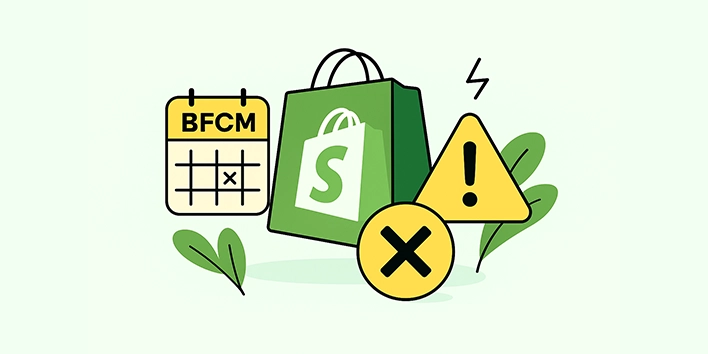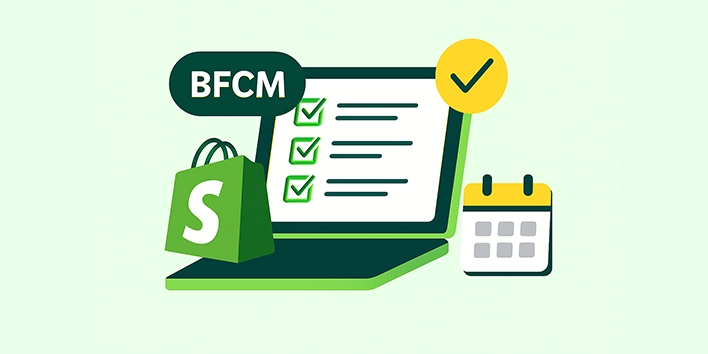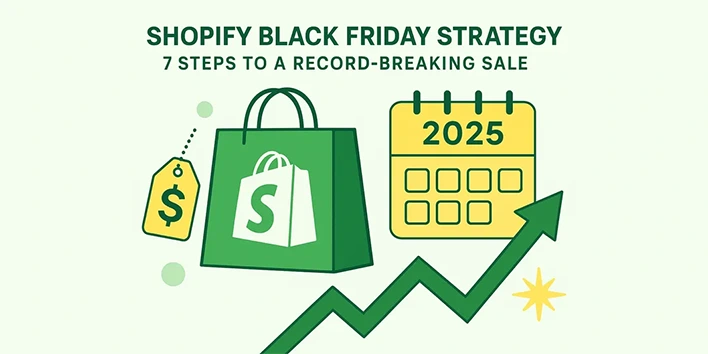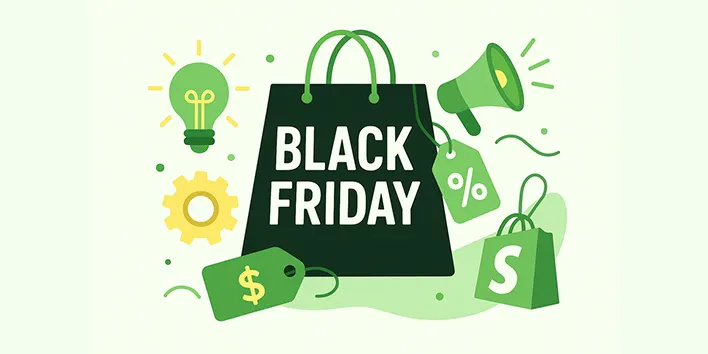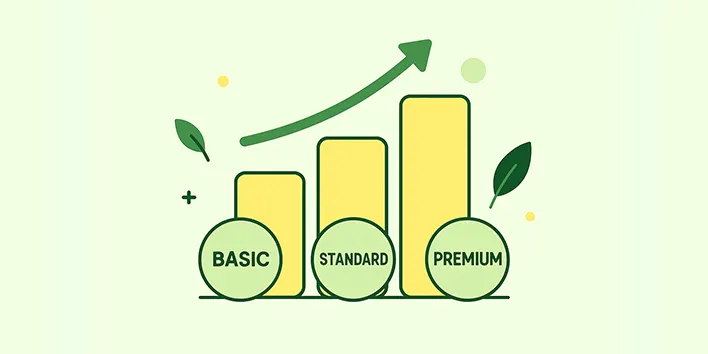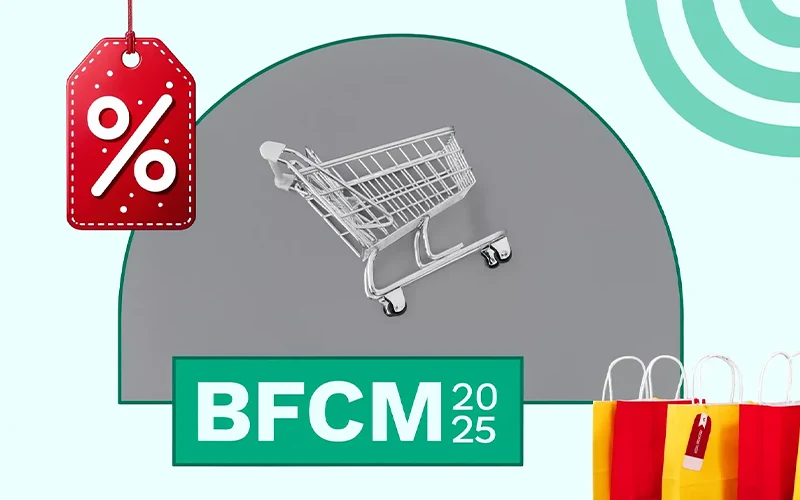Every store owner knows the feeling. Sales are slow, stock is accumulating, and you need to find new clients. Your quickest tool? A discount. Here’s the challenge: How much discount should be given to the customer?
Go too low, and your offer might not be tempting enough to make a difference. Go too high, and you risk slicing your profits and making your brand look cheap. It’s the Goldilocks dilemma of e-commerce: you need to find the discount level that is "just right."
In this article, we will guide you through a clear model of selecting the right discount levels to apply to your sales so that you can increase your revenue without compromising your profits or brand image.
Why Is It Important to Choose the Right Discount Level?
Now, before we go into the how, we should discuss the why. Choosing a percentage for a discount is not an easy decision; it's a strategic move that has major ripple effects across your business. Do it right and you can see sales soar. Do it wrong, and you may end up in a worse position than you were before.
Research indicates that approximately 60 percent of promotions are in fact unsuccessful and lead to profit loss by companies.
The Fine Line Between Boosting Sales and Hurting Profits
It’s easy to get excited by a jump in revenue during a sale. But revenue isn't the same as profit. Higher discounts might sell more, but past a certain point, your profits will drop significantly. The goal is to offer a discount large enough to increase sales, but not so large that it reduces profitability.
Protecting Your Brand's Perceived Value
Your pricing sends a message. By always giving deep discounts, you may end up training your customers to wait until there is a sale and this will devalue your products in their minds. A small discount may indicate quality, whereas a drastic discount may cause shoppers to be suspicious. The appropriate level of discounts will allow you to preserve the reputation of your brand and make sure that customers do not feel that they are buying a cheap product but rather a special offer.
Preventing the Cannibalization Effect
This is a sneaky issue that most retailers do not consider: the cannibalization effect. This occurs when you put one product on sale and it consumes the sales of your other full-priced products. An example would be that a customer who would have purchased your high-priced, full-priced product would instead purchase the discounted product, reducing your overall profit. The trick to preventing this is to choose the right amount of discount on the right products.
The 4 Key Factors in Determining the Right Discount Level
Are you ready to stop guessing and go data-driven? To select the right discount levels, the first thing to do is to examine four important areas of your business. Consider this your pre-flight checklist before you launch any promotion.
Factor 1: Your Product Costs and Profit Margins
This is the most basic rule: you must ensure that you are still making a profit even after the discount. You must know your numbers before you even consider a sale.
- Know Your Markup: Your markup is the difference between your cost to produce an item (Cost of Goods Sold or COGS) and your selling price.
- Calculate Your Break-Even Point: Determine the maximum discount you can offer before you start losing money on a sale: To take an example, when a product is selling at 100 and you are buying it at 80, your absolute maximum discount is 20 percent to break even.
Factor 2: Your Competitors and the Market Rate
Check out what other companies in your sector are doing.
- In a Crowded Market: When you are selling products that are similar to many other brands, you may have to provide a more competitive discount to be noticed.
- For a Unique Product: In case you have a unique product, you might not have to provide a deep discount since there is less competition.
Factor 3: Your Business Goals (e.g., Clear Inventory vs. Acquire New Customers)
Your reason for running a sale will heavily influence how much of a discount is right. Your discount strategy should always depend on your business goals.
- Clear Out Old Stock: If you need to make room for a new collection, a larger discount like a 50% off flash sale might be the perfect strategy.
- Acquire New Customers: To entice first-time buyers, a smaller, well-placed discount is often enough. Research indicates that a 15 percent discount may be very effective in converting new shoppers without bringing in the wrong type of bargain-hunters.
- Increase Order Size: In case you want to encourage customers to spend more, a threshold discount, such as Spend 100, get 15% off is effective.
Factor 4: Customer Behavior and Price Sensitivity
Lastly, think about your target customers. Not all shoppers are the same and their behavior is one of the ingredients of a successful discount strategy.
- Price Sensitivity: Some products and customers are very sensitive to price changes and others are not.
- Purchase History: Your repeat, loyal customers may react better to a dollar-off amount since they understand your prices, whereas a new visitor may react better to a larger percentage-off amount.
- Demographics: The younger and more price-sensitive customers may be interested in higher discounts, whereas more affluent customers may be interested in smaller and exclusive offers as a reward to their loyalty.
Smart Strategies for Choosing the Appropriate Discount Level
After you have taken into account the main factors, it is time to choose a strategy. The correct strategy is more than a mere percentage-off coupon and can make a good sale a great one. These are five powerful tactics, supported by the examples of successful brands.
Strategy 1: Use Tiered Discounts to Increase Average Order Value (AOV)
A tiered discount encourages customers to spend more to save more. Instead of a flat discount, you create spending thresholds that unlock bigger savings. This is a powerful way to increase your AOV.
Boll & Branch, a luxury bedding brand, does this by giving new customers a discount, but only when they spend at least 150 dollars. To determine your own threshold, you need to determine the average order value (AOV) of your store and then set the discount tier slightly higher than the AOV. This pushes customers to put an extra item in their cart than they would have done.
Strategy 2: Create Urgency with Time-Based Discounts and Flash Sales
There is no better incentive to a shopper than the fear of missing out (FOMO). Flash sales, which offer significant discounts for a very limited time, tap directly into this psychological trigger to drive a large number of sales quickly.
Blenders Eyewear has perfected the flash sale, having once made 10x its usual sales with automated Black Friday and Cyber Monday offers. Another option is a timed discount, where the discount gets smaller as time goes on, e.g. 20% off and then 1% off each hour. This motivates the customers to shop early to get the best deal possible.
Strategy 3: Personalize Offers Based on Customer Data
In the age of data privacy shifts, it is more crucial than ever to create your own customer database. Instead of a generic pop-up, you can use that data to create personalized discount experiences that convert better.
As an example, the personal care brand Spongell created a so-called shop quiz, which inquires customers about their preferences. At the end of the quiz, users get personalized product recommendations along with a discount code. This ingenious plan was a massive success, and now it contributes over 25 percent of the brand revenue.
Strategy 4: Offer VIP and Early-Bird Discounts to Loyal Customers
Your most valuable customers are also your most loyal. Giving them special discounts will make them feel special and part of a community. Early-bird discounts are perfect for new product launches or seasonal sales, giving your VIPs first dibs.
The brand TANIT does this well by inviting customers to "Join the VIP Early Bird List" for its Black Friday sale. Subscribers get special perks like bundled deals and sitewide savings of up to 25%. This not only boosts conversions but also helps the retailer forecast demand and manage inventory.
Strategy 5: Use BOGO and Free Gifts for Perceived Value
Sometimes the best discount isn't a percentage off at all.
- Buy One, Get One (BOGO): This popular deal is always a top performer. You can get creative with it, like the brand Hygge Gear, which ran a "Buy 1, Get 4" promotion on its headbands.
- Free Gift with Purchase: Small, unexpected gifts can be a very cost-effective way to convert customers and build loyalty. The apparel brand INTO THE AM automatically offers shoppers a free, tailored gift when they add certain items to their cart—and even lets the customer choose their favorite option.
Read More: What is BOGO discount?
How Much Discount Is Right? Percentage vs. Dollar-Off Deals
So you’ve picked a strategy—now for the final detail. Should you offer a percentage off (like 20% off) or a fixed dollar amount (like $10 off)? The truth is, you shouldn't just pick one and stick with it. The best approach is to use both, depending on the customer and the product.
Read More: Fixed Amount Vs Percentage Discount
When to Use a Percentage-Off Discount (%)
A percentage-off discount often has a higher perceived value, even if the actual savings are the same. This approach tends to work best for:
- First-Time Customers: A shopper who isn't familiar with your pricing is often more influenced by a big number framed as a percentage.
- Higher-Priced Items: A "25% off" discount on a $200 item ($50 savings) sounds much more significant than a "$50 off" discount.
When to Use a Dollar-Off Discount ($)
A fixed dollar amount feels concrete and easy to understand. This is often more effective for:
- Repeat Customers: Shoppers who already have a good grasp of your pricing can immediately recognize the value of a dollar-off promotion, like "$20 T-shirts."
- Lower-Priced Items: For an inexpensive product, "20% off" might seem tiny. A "$5 off" offer, however, feels like a real, tangible saving.
A Quick Tip for Implementing Your Choice
Once you decide, managing these rules can get complicated. This is why many Shopify store owners use specialized apps. For instance, tools like Discounty are built to handle various campaigns—from tiered quantity breaks to store-wide flash sales—by allowing users to set up, schedule, and automatically apply these rules, which helps prevent errors like unintentional discount stacking.
How to Measure and Improve Your Chosen Discount Level
Launching your sale is not the end of the process. The most successful brands are constantly learning and refining their approach. Once your promotion is over (or even while it's running), you need to measure its true impact to make your next sale even better.
Tip 1: Analyze Your Sales Data (The Full Picture)
To know if your promotion was a real financial success, you have to look beyond the simple sales lift during the campaign. A complete analysis involves looking at four distinct effects:
- The Pre-Promotion Dip: Did your sales slow down right before the promotion started? This can happen when savvy customers learn to wait for your deals, which is something you need to be aware of.
- The Promotion Lift: This is the obvious part—the increase in sales you see while the discount is active.
- The Post-Promotion Slump: It is expected that sales drop for a week or two after a major promotion. This is because the market becomes saturated- customers have already purchased what they require.
When you add all these effects, you will be able to know whether the promotion was actually profitable.
Tip 2: Run A/B Tests on Different Discount Levels
The only way to know what really works with your audience is to test it. Experiment with different discount levels using A/B testing to identify the most effective option. As an example, you might give one group of customers a 15 percent discount and another group a 20 percent discount and compare the conversion rates and overall profitability. This is much more accurate than guessing.
Tip 3: Monitor Key KPIs in Real-Time
Do not simply set your discount and leave it. Throughout the campaign, you must track important Key Performance Indicators (KPIs) such as sales volume and conversion rates in real-time. This will enable you to be dynamic and make changes on the fly in case you realize that a promotion is not doing as well as it should.
Read More: Increase Shopify Store Conversions Rates
Choosing Correct Discount Levels: Examples from Successful Shopify Stores
Theory is great, but seeing these strategies in action is even better. Here are a few examples of how successful brands have nailed their discount levels.
Example 1: Boll & Branch’s Tiered Discount for Big Spenders
Boll & Branch, a luxury bedding company, was interested in motivating customers to make bigger orders. They also introduced a tiered discount policy where new customers would receive a discount, but only when they spent at least 150 dollars. This is an ideal case of establishing a spending limit beyond the average order value to effectively persuade customers to put more items in their carts.
Example 2: Blenders Eyewear’s High-Converting Flash Sales
Blenders Eyewear, which sells popular sunglasses and ski goggles, generated 10 times its usual sales by perfecting the flash sale. The company scheduled two different, high-discount site designs to launch automatically using Shopify Launchpad to run its Black Friday and Cyber Monday promotions. This generated an enormous feeling of urgency and buzz, leading to an enormous amount of sales within a short time.
Read More: Black Friday Pricing Strategies
Example 3: Out of Print’s Targeted Percentage-Off vs. Dollar-Off Strategy
Out of Print, an apparel company that sells merchandise based on books, is a master of both percentage and dollar-off discounts, as it appeals to various customer groups.
- To make a big impression on first-time shoppers who do not know their pricing, they provide a site-wide percentage-off discount code.
- In the case of repeat customers, who are more aware of their product prices, they respond better to dollar-off discounts or offers such as 3 T-shirts at 50 dollars.
Final words: From Guesswork to Growth
Deciding on the amount of discount to offer to the customer need not be a gamble. By moving away from guesswork and toward a strategic, data-informed approach, you can create promotions that not only excite your customers but also contribute to healthy, sustainable growth for your business.


